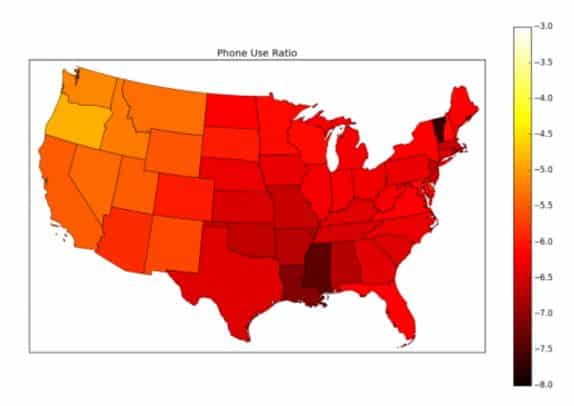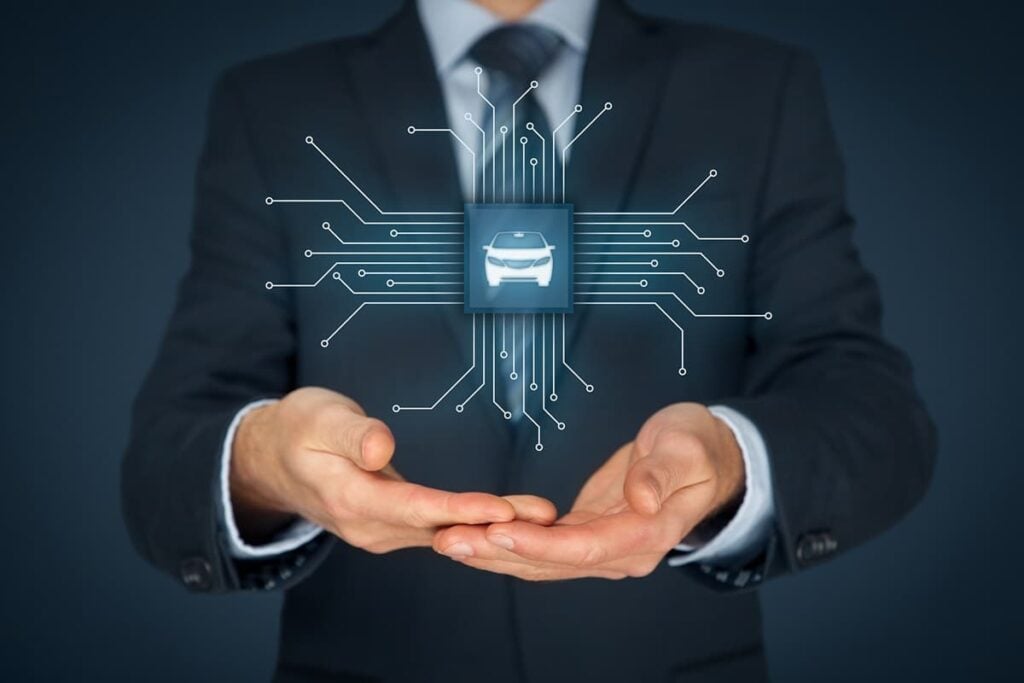Zendrive Tackles Distractions While Driving
Table of contents
Table of contents

In a recent article we talked about how valuable autonomous driving data is, especially when it’s accompanied by things like the driver’s actual reaction to an event as it happens. We threw out some pretty interesting facts about how many collisions are caused by distracted driving. And we’re not just talking about texting while driving. There’s also something called “mental distraction” which occurs when you are trying to remortgage your house while driving, which a lot of people seem to be doing lately. Here’s a scale of mental distraction based on severity:

As you can see from the above diagrams, the term “driver distraction” has a lot more under the hood, so to speak, than just texting away on your smartphone. There are many forms of distraction that we are unaware of, which is why one startup is looking to tackle this problem with a driving solution that you already carry around in your pocket.
About Zendrive
Founded in 2013, San Francisco startup Zendrive has so far raised $20 million in funding from investors like BMW (FRA:BMW), Yahoo! Founder Jerry Yang, Max Levchin from Affirm, and even the man who works only 4 hours a week, Timothy Ferris. As the name Zendrive implies, the product makes your trip a safer experience, but doesn’t require hardware like Nauto. Numerous apps, some used by commercial fleets, or consumer apps such as Life360 collect anonymized information on how drivers with those apps are operating.”98% of driving infractions can be captured by the sensors in smartphone,” according to a a study conducted by the University of Illinois.
Zendrive first came across our radar in an article we wrote about “10 Artificial Intelligence Startups in Insurance“. In that piece, we learned that Zendrive uses machine algorithms to analyze vast amounts of big data obtained from the smartphones of subscribers which can be used to provide individual insights or produce charts like this showing where in the U.S. you’re most likely to be killed by some idiot yapping away on their cell phone:
As the great philosopher George Carlin used to say, “everyone who drives slower than you is a moron and everyone who drives faster than you is a maniac“. It’s our lack of self awareness that requires a truly objective judge of how we drive – artificial intelligence of course. Sometimes we aren’t aware how often we get distracted while driving, and that’s why no matter how many boring training videos HR makes you sit through, if you drive for a living, you are going to get distracted at some point. This is particularly vexing for those companies that employ lots of drivers, and even more so for the companies that underwrite the auto insurance policies for these drivers.
Being an actuarial is one of those jobs that sounds incredibly boring but can actually be incredibly interesting when you start to throw big data into the mix. That’s why insurance companies are falling all over themselves to get a hold of the driving data that companies like Zendrive produce. Take Milliman for example, one of the largest actuarial firms in the world, which just released a white paper that shows how accurate Zendrive is when predicting whether or not a driver will be involved in a collision.
The first generation of driver data collection was something called “usage based insurance” or “pay as you go insurance” which we discussed before. This was enabled by OBD-II port connectors that would relay information up to the cloud, like this one:
As it turns out, the smartphone that never leads your side is far more capable than these legacy hardware devices used before. It’s also much easier for people to adopt since all they have to do is download one of the many apps that contain this technology, Life360 and Gas Buddy being just two examples. Given RAND Corporation’s claim that autonomous driving needs “8 billion test miles” to be feasible, the amount of data that Zendrive has gathered is pretty staggering.
Zendrive has crunched more than 30 billion miles of smartphone data obtained from millions of drivers. It took them 7 months to go from 1 billion miles to 15 billion miles, and then just 3 months to go from 15 to 30 billion showing exponential growth. (To put this into context, it took Progressive 18 years to collect 15 billion miles of driving data.) What Milliman found from analyzing this data with some machine learning algorithms was that they could predict the likelihood of a collision with up to six times more predictive power than some industry-leading models (which are based on traditional telematics data coming from the legacy OBD-II port hardware). Here’s a cool chart with a line that spikes upwards which shows you that:

This means that now you can start to confidently predict who is not a safe driver, something that insurance companies and fleet management companies would be mighty interested in.
When you land on the homepage of Zendrive, you see a smiling woman checking her smartphone before getting into the car of someone who has a “driver score of 90”. Will this driver score become something that we are all assigned going forward from the time we begin driving? If the idea of that troubles you, then what if your insurance company offers you a 30% discount if you use the app while driving? Your rates will then adjust almost in real-time to events that take place while you are driving. Almost hitting granny at the cross walk because you were impatient will cost you an extra $3.29 cents a month. Driving extra slowly through the same school zone 25x shows some consistent behavior, and your bill drops by $2.78 a month. Some people will probably figure that out and try to game the system, but the point here is that built-in gamification is a good motivator for people to proactively try to become better drivers. For fleet managers, safety is hardly a game, and they’ll be able to quickly assess how well the fleet is performing using dashboards like this one:
The real question is what will become of solutions like this when autonomous driving gets here. Is the data being generated useful for an autonomous driving platform such that someone will pay for it? It’s not the data where all the value exists, but rather the regulatory function that Zendrive hopes to address. One of the founders, Jonathan Matus, talks about a future where Shared Electric Autonomous (SEA) fleets provide all the necessary transportation for a majority of people. We had a chat with Jonathan about his vision for how autonomous driving will unfold, and he sees the implementation falling into 3 stages:
- Mixed Driving (Majority Human) – This is where humans and machines coexist together. The main concern will be whether or not autonomous cars drive as safe as humans.
- Mixed Driving (Half and Half) – This is where SEA fleets now have their own car lane in which they cruise at high speeds. The main concern will be whether or not human cars can drive as safe as autonomous cars.
- Majority Autonomous – Urban areas may only allow autonomous SEA fleets. Driving is a hobby and restricted to rural areas.
The common thread across these 3 stages is a need for relative driving safety to be measured across all types of vehicles. In order for these SEA fleets to become a reality, there are certain hurdles that need to be addressed:

Both the regulatory and safety hurdles can be addressed with Zendrive’s tool. It’s easy to see how this technology might be ported over to an “AI-powered autonomous vehicle” as an objective way to measure safety in autonomous vehicles and even perform relative safety comparisons . Would you ride in a low-cost carrier that had a worse safety record (algorithms trained on less data as an example) to save a few bucks? Some people would probably be up for that, but if the safety level breaches a certain regulatory threshold then the company loses their license for operating autonomous cars on roadways. In order for this to happen, Zendrive needs to work with the government and make adoption mandatory. That’s why they brought in this guy:
The first thing we thought after reading his bio was, how can an increase in walkers and bikers lead to fewer casualties? Here’s the actual study they did to prove that, though if you’ve ever driven in a faraway land called Africa, you would know that in emerging markets that’s just not true whatsoever. At any rate, now Mr. Budnick can take the results of studies like those produced by Milliman and use them to convince the government that Zendrive’s software is a key piece in the regulatory puzzle that autonomous driving is presenting. Why not get a jump on the crowds and download one of the apps yourself?
Update 9/19/2017 – Zendrive put out a very interesting mapping tool so you can see how safe people drive around the schools you frequent. Check it out.
Sign up to our newsletter to get more of our great research delivered straight to your inbox!
Nanalyze Weekly includes useful insights written by our team of underpaid MBAs, research on new disruptive technology stocks flying under the radar, and summaries of our recent research. Always 100% free.

















